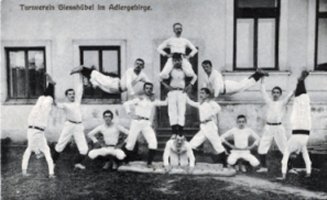The Fascinating History of Gymnastics: From Ancient Greece to Modern Olympics
Gymnastics is one of the oldest sports in human history. From ancient civilizations practicing acrobatics to modern Olympic competitions, its journey reflects cultural values, innovation, and physical prowess. This post traces gymnastics' evolution, highlighting key milestones and the people who shaped the sport.
Ancient Gymnastics: Foundations of the Sport
Early Origins (Egypt and China)
In ancient Egypt, stone carvings depict human pyramids and balancing stunts dating back to 2100 BC. Acrobatics and tumbling routines were common, blending entertainment with displays of physical skill. Across the world, Chinese performers practiced stunts involving balance and agility. Both civilizations laid the groundwork for gymnastics as an art form.
Greek Innovations
The Greeks formalized gymnastics into a discipline. They coined the term from the word gymnos, meaning "naked art," reflecting their cultural emphasis on physical fitness. Gymnasiums, or gymnasia, became hubs of training and intellectual debate. Philosophers like Plato and Socrates frequented these spaces to strengthen both body and mind.
Gymnastics in Greece served three main purposes:
- Maintaining physical health.
- Preparing for military service.
- Training athletes for competition.
Galen, a prominent physician, introduced "medical gymnastics," an early form of physical therapy. By 776 BC, gymnastics had a place in the first Olympic Games, showcasing physical skill alongside other sports.
Roman Contributions
The Romans adapted gymnastics for military training, using apparatus like the pommel horse to simulate combat scenarios. Gymnasiums trained soldiers to master mounts and dismounts on horseback. Although the Romans eventually shifted their focus to gladiatorial events, gymnastics remained a foundation for strength and agility.
The Medieval and Renaissance Periods
The Role of Gypsies
During the Middle Ages, gymnastics survived through traveling performers, particularly gypsies. They entertained audiences with acrobatics, juggling, and animal tricks. These performances preserved the techniques of ancient gymnastics, keeping the tradition alive.
Revival During the Renaissance
As Europe embraced education and physical fitness, gymnastics reemerged as an essential component of schooling. Influenced by Greek and Roman practices, educators began incorporating physical training into curricula.
Modern Gymnastics: The Birth of Organized Sport
Key Figures of the 18th and 19th Centuries
Modern gymnastics took shape in Europe during the 18th century. Influential figures like Johann Basedow, Friedrich Jahn, and Per Henrik Ling developed structured exercises and apparatuses still used today. Jahn, often called the "Father of Gymnastics," invented the horizontal bar, parallel bars, and vaulting buck.

In 1862, Miroslav Tyrs founded the Sokol movement in Czechoslovakia, promoting gymnastics for fitness and national pride. Turner societies, originating in Germany, spread gymnastics globally. By the late 1800s, these organizations introduced gymnastics to American schools and clubs.
Gymnastics in Education and Competitions
By the mid-19th century, schools integrated gymnastics into physical education. Competitive gymnastics emerged, with clubs hosting local and national meets. Apparatus-based events like the horizontal bar and floor routines gained popularity.
Gymnastics and the Olympics
Becoming an Olympic Sport
Gymnastics debuted at the modern Olympic Games in Athens in 1896. Events included parallel bars, horizontal bars, and vaulting. Over time, the sport expanded to include women’s artistic gymnastics (1928), rhythmic gymnastics (1984), and trampoline (2000).
Cold War Rivalries
During the Cold War, gymnastics became a stage for showcasing national strength. The USSR and Eastern European nations dominated, producing legendary athletes like Olga Korbut and Nadia Comaneci. Comaneci's perfect 10 at the 1976 Olympics revolutionized the sport, raising its profile globally.
Iconic Moments
From Comaneci’s flawless routines to Simone Biles redefining athletic limits, gymnastics has created unforgettable moments. These athletes inspire generations, proving the sport’s enduring appeal.
Modern Gymnastics in the 21st Century
Technological Advancements
Technology has transformed gymnastics. AI assists judges in scoring routines, while improved equipment enhances safety. Coaches analyze performances using motion-capture software, ensuring precise feedback for athletes.
Diversity in Disciplines
Gymnastics now includes artistic, rhythmic, trampoline, and acrobatic events, catering to diverse interests and skills. Each discipline brings unique challenges, from the graceful ribbon routines of rhythmic gymnastics to the explosive power of trampolining.
Role in Fitness
Beyond competition, gymnastics promotes health and fitness worldwide. It builds strength, flexibility, and coordination, making it a foundational activity for children and athletes alike.
Timeline Chart: Highlighting Key Milestones in Gymnastics History
- 2100 BC: Egyptian pyramids and balancing stunts documented.
- 776 BC: Gymnastics featured in the first Olympic Games.
- 18th Century: Johann Basedow and Friedrich Jahn formalize modern gymnastics.
- 1896: Gymnastics included in the modern Olympic Games.
- 1976: Nadia Comaneci achieves the first perfect 10 in Olympic history.
- 2000: Trampoline gymnastics added to the Olympics.
Ready to start your acrobatics adventure? Find a qualified instructor or program near you and begin learning today!
Frequently Asked Questions
- How did gymnastics evolve into an Olympic sport? Gymnastics was included in the first modern Olympics in 1896. Events have expanded over the years to include disciplines like rhythmic gymnastics and trampoline.
- What is the cultural significance of gymnastics? Gymnastics reflects cultural values, from Greek ideals of physical and mental balance to modern inclusivity and athleticism.
- Who are the most influential figures in gymnastics history? Key figures include Friedrich Jahn, Nadia Comaneci, and Simone Biles, each contributing to the sport’s evolution and popularity.
- How has technology influenced modern gymnastics? Technology improves judging accuracy and athlete training through AI and motion analysis tools.
- What are the main types of gymnastics? The primary disciplines are artistic, rhythmic, trampoline, and acrobatic gymnastics, each offering unique challenges.